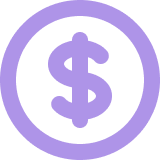Category Intelligence
Gain incisive category insights, industry outlook and trends, supply market intelligence, supplier profile and risk ratings, performance benchmarks, and pricing data
Self-serve Category Intelligence on Beroe LiVE.Ai™
Rapid resolution of 60-70% of your sourcing queries across category, market, suppliers, risk, cost and more

Macroeconomic and regional trends impacting cost, supply, and other market dynamics

Detailed analysis on market, supply, cost, and pricing (>95% NAICS spend codes covered globally).

Supplier profiles with capabilities, risk ratings, sustainability scores, and media mentions

Insights into latest innovations, industry benchmarks, negotiation levers and more.

Looking for Custom Category Intelligence?
Category listing
Actionable intelligence on more than 1,200+ categories
Popular Categories
3D Printing Services
3PL Services
3PL Services Australia
4PL Services
ABS
AI & Digital Ops In Patient Access
API Povidone Iodine
ATM Services
ATM Services Australia
Academic Research
Acesulfame-K
Acetic Acid
Acetone
Acrylic Acid
Activated Carbon
Active Components


